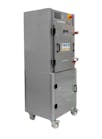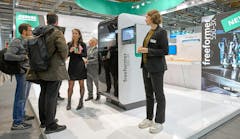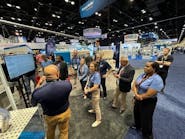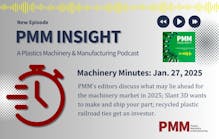By Bruce Geiselman
Boom Supersonic, which is building what could be the world’s first commercial supersonic passenger jet since the Concorde, which last flew in 2003, is relying on additive manufacturing to make its dream a reality.
The Denver-based company, founded in 2014, hopes its XB-1 demonstrator plane will take to the air later this year for its first test flight.
At the same time, it is developing the Overture, which will be the world’s fastest airliner and carry 65 to 88 passengers at a maximum speed of Mach 1.7. The company says it will be capable of flying on 100 percent sustainable aviation fuel.
On Jan. 26, the company announced that it had chosen Greensboro, N.C. to build its Overture production facility, which they expect to be operational in 2024. Boom hopes the Overture’s first flight will take place in 2026 and that it will be carrying passengers by 2029. United Airlines, Japan Airlines and the U.S. Air Force have expressed interest in using Boom’s supersonic planes.
The company now is working to get its XB-1 into the air. Boom, in a January blog post, said it is getting close as the ground crew in Denver began conducting engine runs last year on the demonstrator plane, a critical phase of ground-testing leading up to test flights. The General Electric J85 engines, currently used on a Canadian military jet, need extensive testing with the experimental XB-1 before test flights are conducted, according to the company.
Boom relied on 3D printing throughout construction of the XB-1, including for functional prototyping, tooling and production parts.
“When we think about aircraft parts, we imagine virtually indestructible materials and assemblies,” Boom said in a blog post. “3D printed parts don’t come to mind. But advancements in both materials and 3D printers are accelerating changes that make 3D printing the perfect fit for prototyping, tooling and flight hardware — not to mention replacement parts, interiors and even lavatory fixtures.”
More than 300 unique 3D printed parts are installed on the XB-1. Such parts, depending on the choice of materials, can be substantially lighter than traditional parts fabricated with steel and aluminum.
Boom turned to 3D printer supplier Stratasys to meet its needs. Three Stratasys printers — the F900, Fortus 450mc and F370 — were used during construction of the XB-1.
The F900 printed hundreds of parts that are installed on the XB-1, as well as drill blocks used when constructing the plane. The F900 prints with materials such as Ultem 9085 and Ultem 9085 CG polyetherimides, both of which are flame-retardant, high-performance thermoplastics with high strength-to-weight ratios, heat resistance and impact strength. Ultem 9085 was developed primarily for use by the aerospace industry and is widely used in aircraft interiors, according to Stratasys.
Boom used F900 and Fortus 450mc printers to produce more than 550 drill blocks used during construction of the XB-1. Without 3D printing, it would have taken considerably longer to produce each drill block, and it would have cost tens of thousands of dollars more to construct the drill blocks from aluminum, Boom said. The company used the Stratasys Fortus 450mc to print some of the drill blocks from FDM Nylon 12 CF, a Stratasys material for fused deposition modeling that is impregnated with carbon fiber for strength.
The Stratasys F370 typically prints with acrylonitrile styrene acrylate, an economical and lower-strength material that was used for rapid prototyping and test-fitting components for the XB-1.
The Boom team prototyped parts ranging from components for flight control systems to a fuel manifold to engine mounts.
Boom also relied on metal 3D printing to quickly produce parts that otherwise could have taken weeks, if not months, to machine. Boom partnered with Velo3D. In total, Velo3D printers turned out 21 parts for the XB-1, including complicated titanium parts such as manifolds for the variable bleed-valve system, which expels excess air from the engine compressor. Traditional manufacturing would have been impractical. The desired geometry was only possible by using 3D printing, the company said in a blog post.
3D printing makes it possible to reduce production costs and manufacturing timelines while also reducing plane emissions by building lighter aircraft, according to Boom.
Contact
Stratasys Ltd., Eden Prairie, Minn., 952-937-3000, www.stratasys.com
Bruce Geiselman | Senior Staff Reporter
Senior Staff Reporter Bruce Geiselman covers extrusion, blow molding, additive manufacturing, automation and end markets including automotive and packaging. He also writes features, including In Other Words and Problem Solved, for Plastics Machinery & Manufacturing, Plastics Recycling and The Journal of Blow Molding. He has extensive experience in daily and magazine journalism.






